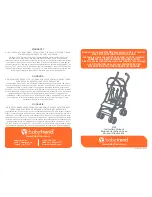
Routing IR Data
• IR commands from a room location are home run to its assigned SENSOR input on the RVL-6.
• IR data from the home theater is routed to its dedicated source components (ie. surround-sound receiver,
VCR, DSS, TV, etc.) via an IR repeater system (Niles carries a full-line of IR products). The IR DATA OUT of
the IR repeater system’s IR main system unit is connected to the IR DATA IN of the RVL-6.
• The stereo receiver is controlled by an IR flasher connected to the DEDICATED FLASHER output on the
RVL-6. IR flashers controlling shared source components are connected to the COMMON FLASHER outputs
on the RVL-6.
• Both ZONE DIP switches are set to the disabled position (down). This ensures that no IR command conflicts
will occur if using two receivers made by the same manufacturer.
Programming Learning Remote Controls and IntelliPads
• Learning remotes and IntelliPads in the system are taught the Niles RVL-6 IR commands for ON, OFF, ALL
ON, ALL OFF, VOLUME UP and VOLUME DOWN. The VOLUME UP and VOLUME DOWN IR commands
of the RVL-6 replace those of the stereo receiver (See page 19).
Powerline Carrier Controls
Background Information (X-10
®
or Leviton Decora
®
Home Control)
• Powerline carrier push buttons, control panels, wall switches and remote controls are all transmitters plugged
or hard wired into the house AC power wiring. These controllers, or transmitters, broadcast a series of coded
instructions over the network of the home’s AC power lines. Receiving modules are plugged or wired into
the home’s AC power lines to receive the coded instructions and execute a command such as turn on a lamp,
open drapes or power up a sprinkler system.
• A powerline carrier system can control 256 different receiving modules by giving each one a unique address
or code combination. After you press a button on a remote control, the transmitter will send out address
codes before giving an actual command to do something. That way, only the desired appliance or lamp
receiving module will be affected by the code.
• The address codes work like this: The system is divided into 16 groups of receiving modules. These groups
are addressed via H
OUSE
C
ODES
represented by the letters A-P. Each H
OUSE
C
ODE
addresses 16 receiving mod-
ules. Each of the receiving modules within a House Code are addressed by U
NIT
C
ODES
represented by the
numbers 1-16. For example, if you installed an appliance module for your outdoor lighting system around
your driveway, you could turn the lighting on or off from any powerline carrier wall switch, control panel or
remote control in the house. You would set the address switches on the receiving module to give the out-
door lighting system a unique address (e.g. House Code=P Unit Code=12).
• Grouping modules within one House Code allows you to use an ALL ON command generated by a power-
line carrier controller to turn on groups of modules. When this button is pressed on a wall switch, control
panel or remote control, only a House Code is transmitted before the code for ALL ON. Every module set
with the same house code will respond and turn on. Likewise, the ALL OFF command will affect only the
modules with the same house code setting.
34
Controls DATA IN
to DEDICATED FLASHER
Controls DATA IN
to Room 1 control module
Figure 40 Setting the ZONE dip switches.













































